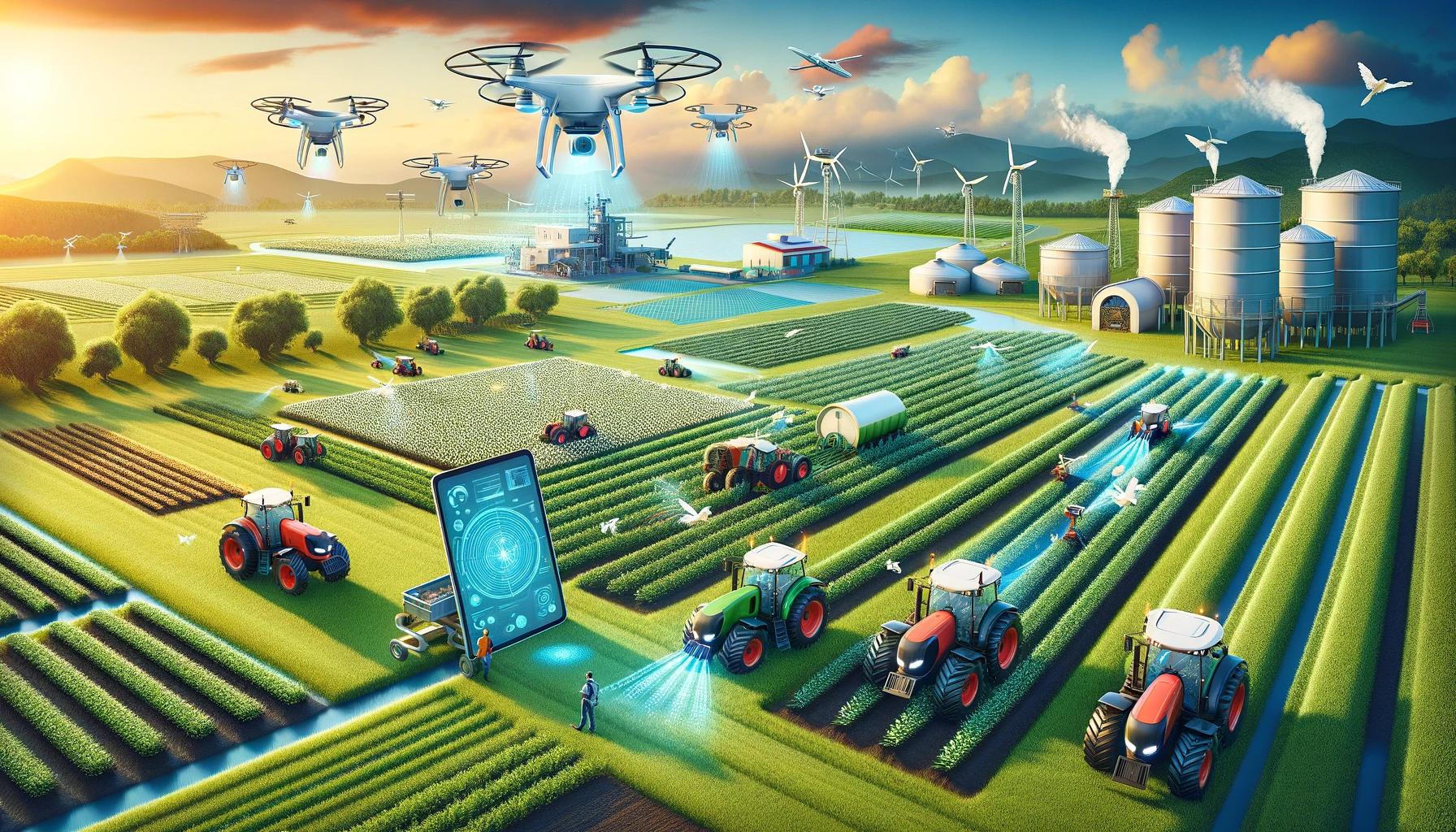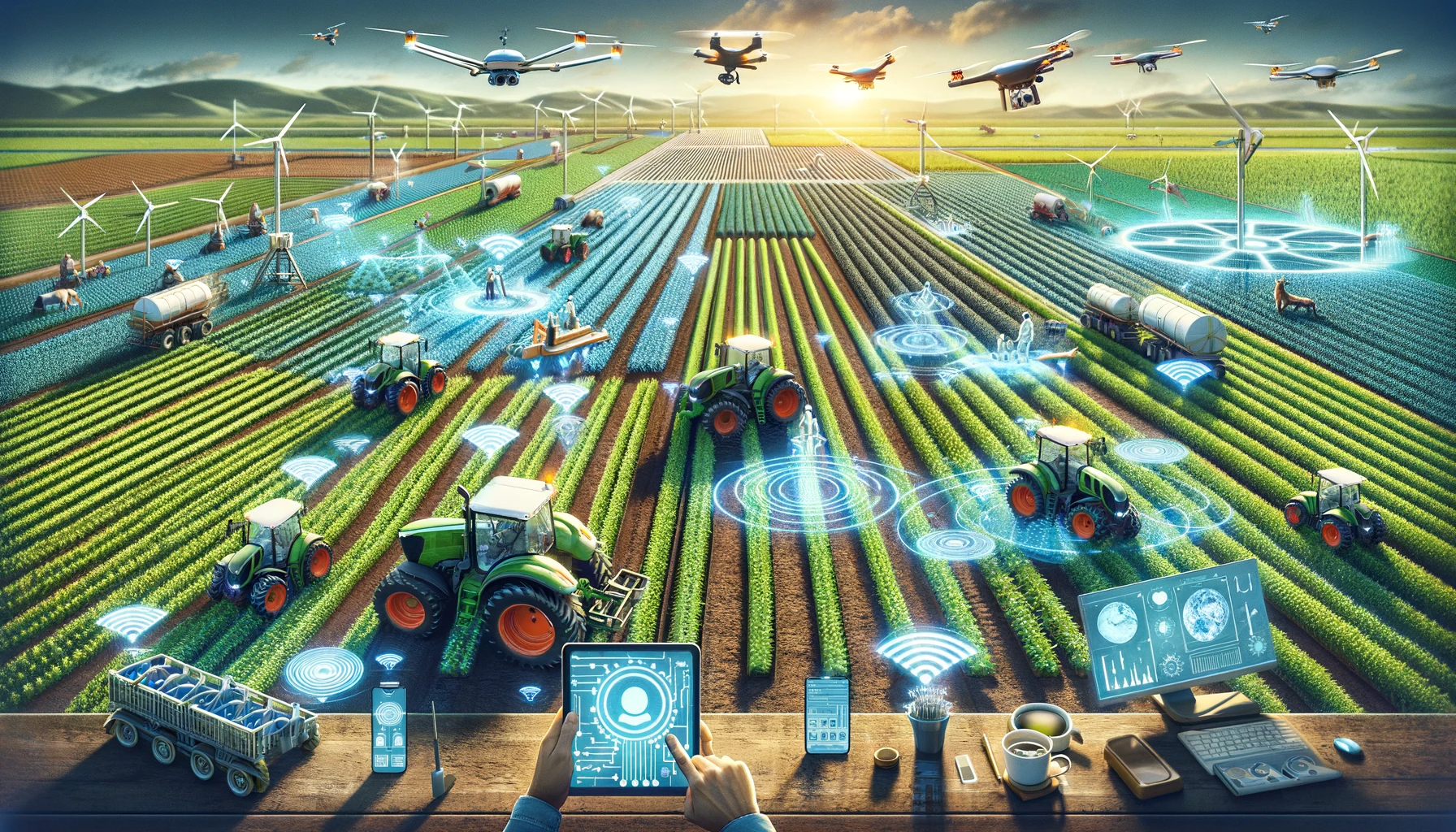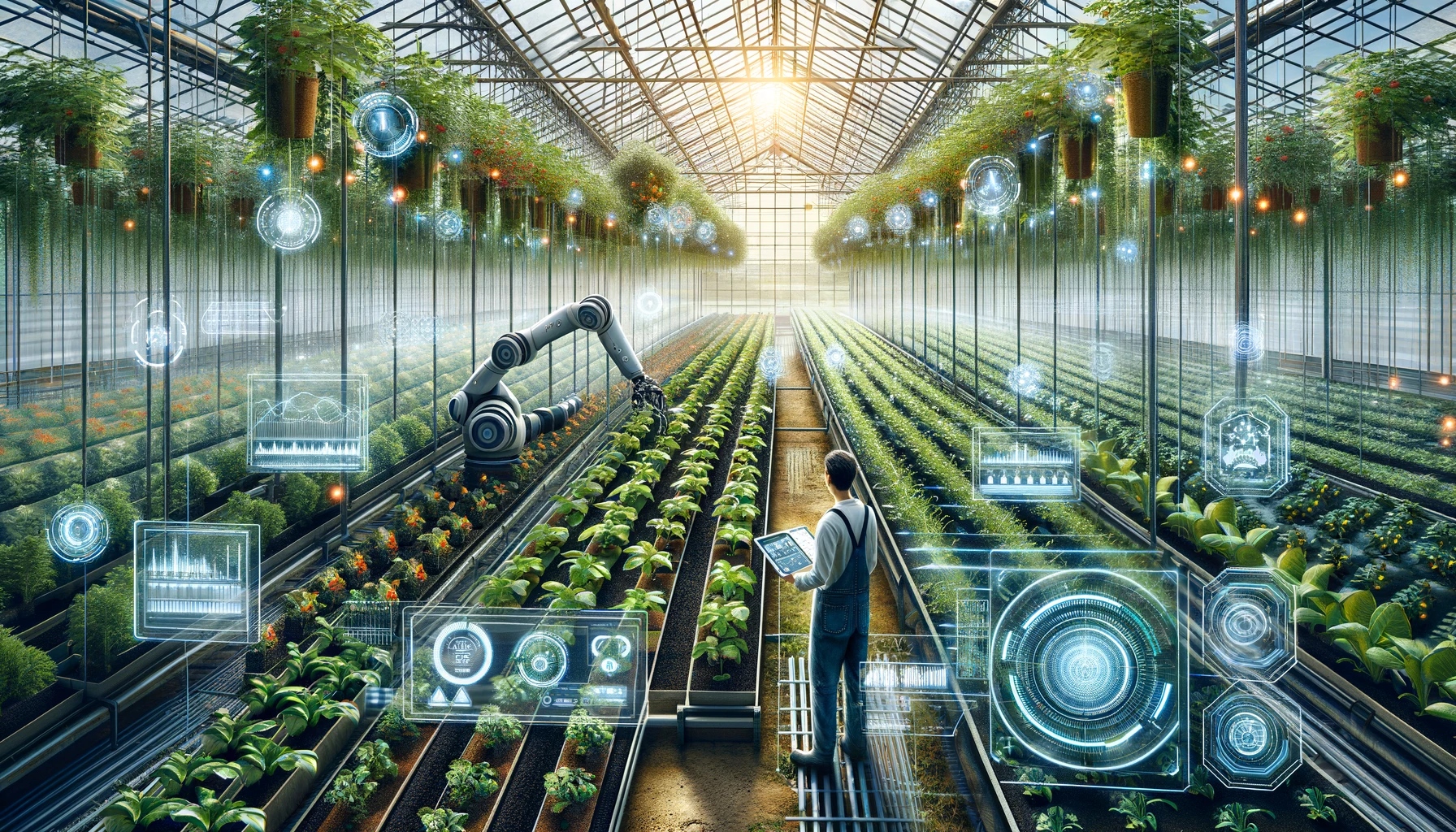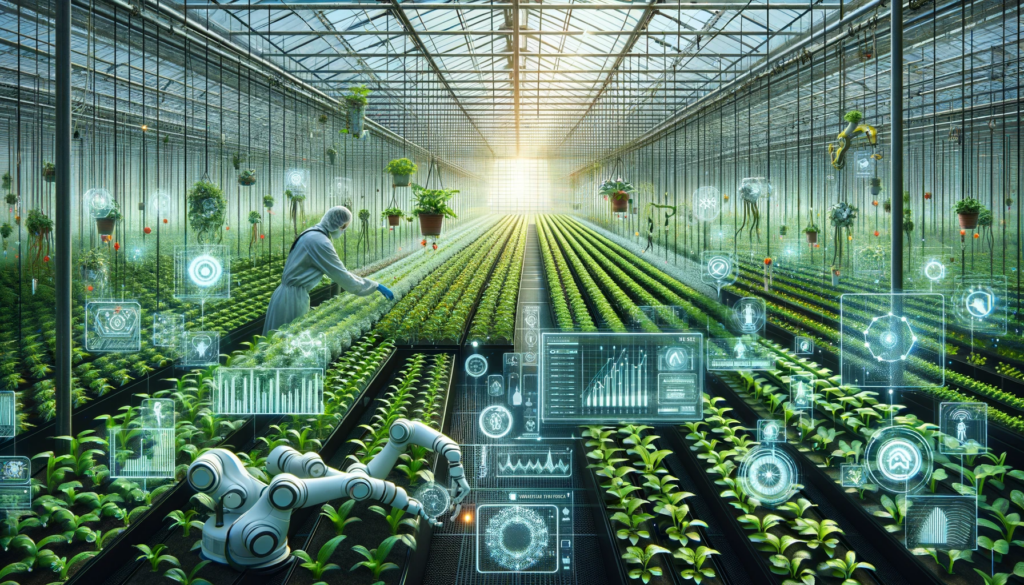Agriculture plays a paramount role in nourishing the ever-growing global population. As the demand for food surges, traditional farming methods find themselves facing formidable challenges that threaten food security and environmental sustainability. Conventional farming, reliant on unpredictable weather patterns, manual labor, and resource-intensive practices, is grappling with limitations that impede its capacity to meet the burgeoning needs of humanity. In light of these challenges, a pivotal question arises: Can Artificial Intelligence (AI) be the harbinger of a revolution in traditional farming?
This article endeavors to delve into the transformative potential of AI in the realm of agriculture. We aim to dissect the current state of traditional farming, shedding light on its inherent constraints and the pressing concerns of crop yield limitations and sustainability. The central focus of this exploration is the burgeoning field of AI, poised to offer innovative solutions to age-old farming dilemmas. By harnessing the power of AI, we aspire to examine how traditional farming practices can be revolutionized, leading to enhanced crop yields, sustainable farming methods, and ultimately, a more food-secure future for the planet. Join us on this journey as we navigate the fertile terrain of AI in agriculture and unearth the promise it holds for a world that hungers for change.

The State of Traditional Farming
Traditional farming methods, passed down through generations, have been the backbone of agriculture for centuries. These practices often involve manual labor, dependence on natural weather patterns, and resource-intensive approaches. While they have served humanity well, traditional farming faces significant limitations in the modern era.
One of the most pressing challenges is the reliance on unpredictable weather conditions. Crop success is highly contingent on rainfall, temperature, and other climate variables. This vulnerability to weather fluctuations can result in crop failures and food shortages, impacting global food security.
Additionally, traditional farming relies heavily on manual labor, which can be physically demanding and economically unsustainable. Farmers face challenges in recruiting and retaining a skilled workforce, further straining the industry.
Furthermore, conventional farming practices often lead to resource inefficiencies. Water and fertilizer usage may not be optimized, contributing to resource depletion and environmental degradation. The need to produce more food for a growing population, while minimizing environmental impacts, has never been more critical.
Statistics on global agriculture challenges underscore the urgency of addressing these issues. The United Nations predicts that the world’s population will reach 9.7 billion by 2050, necessitating a 70% increase in food production. In light of these challenges, it becomes clear that traditional farming methods, while honorable in their history, are insufficient to meet the food demands of the future.
AI in Agriculture: An Overview
Artificial Intelligence (AI) is a technological revolution that is making significant inroads into agriculture. AI encompasses a range of technologies, including machine learning, computer vision, and data analytics, that can be applied to farming practices.
AI’s relevance in agriculture lies in its ability to process vast amounts of data and make data-driven decisions in real time. This capacity is a game-changer for farmers seeking to optimize their operations, increase crop yields, and reduce resource wastage.
AI finds applications in various facets of agriculture, such as precision agriculture, drone technology, and data analytics. Precision agriculture involves using AI-driven sensors and equipment to monitor and adjust planting, irrigation, and fertilization with pinpoint accuracy. Drones equipped with AI can provide aerial surveys of crop health, enabling early detection of disease or nutrient deficiencies.
The advantages of AI in agriculture are manifold. Increased productivity is one of the most significant benefits, as AI can help farmers make informed decisions that lead to higher crop yields. Sustainability is another critical aspect, as AI can optimize resource usage, reduce waste, and minimize environmental impacts. AI-driven agriculture holds the promise of addressing the limitations of traditional farming while propelling the industry into a more efficient and sustainable future.

Precision Agriculture with AI
Precision agriculture is a farming approach that leverages advanced technologies like Artificial Intelligence (AI) to optimize farming practices with a high degree of accuracy. It is a transformative concept in agriculture that has the potential to revolutionize traditional farming methods.
AI plays a crucial role in precision agriculture by enabling farmers to make data-driven decisions in real time. Here’s how AI is applied to key aspects of precision farming:
- Precision Planting: AI-driven systems analyze data from soil sensors, weather conditions, and historical crop performance to determine the optimal planting depth, spacing, and timing. This ensures that each seed is placed at the right depth and location for optimal growth.
- Precision Irrigation: AI algorithms can assess soil moisture levels and weather forecasts to deliver precise amounts of water to crops through automated irrigation systems. This prevents over-irrigation, conserves water resources, and promotes healthier crop growth.
- Precision Fertilization: AI analyzes soil nutrient levels and crop requirements to create customized fertilization plans. By precisely delivering the right nutrients at the right time and in the right amounts, farmers can improve crop yields and reduce fertilizer waste.
The potential for AI in precision agriculture is immense. By reducing resource wastage, optimizing planting and irrigation, and enhancing crop management, AI can significantly increase crop yields while minimizing environmental impacts. This not only benefits farmers by increasing their productivity but also contributes to sustainable farming practices.
AI for Crop Monitoring and Disease Detection
AI-powered sensors and satellite imagery have revolutionized crop monitoring and disease detection in agriculture. These technologies provide farmers with unprecedented insights into the health of their crops and allow for early intervention to mitigate disease outbreaks.
AI-driven sensors installed in fields can continuously monitor crop conditions. They collect data on factors such as temperature, humidity, soil moisture, and nutrient levels. AI algorithms process this data to assess crop health and identify any anomalies. If irregularities are detected, farmers are alerted to take action promptly.
Satellite imagery, combined with AI, provides a broader perspective. Satellites capture high-resolution images of vast agricultural areas, and AI algorithms analyze these images to detect signs of disease, stress, or nutrient deficiencies in crops. The benefit of satellite-based monitoring is the ability to cover large regions efficiently.
Case studies abound where AI has successfully identified crop issues. For instance, AI-powered systems have detected early signs of diseases like wheat rust, allowing farmers to implement targeted treatments and prevent widespread crop losses. Additionally, AI can distinguish between healthy and stressed vegetation, helping farmers identify areas that require immediate attention.
Early disease detection is of paramount importance in agriculture. It allows farmers to take corrective measures promptly, reducing the spread of diseases and minimizing crop losses. This not only safeguards crop yields but also contributes to food security and sustainable farming practices.
Sustainable Farming Practices
AI holds great promise in supporting sustainable farming practices. One of the primary ways AI contributes to sustainability is by reducing chemical usage and promoting eco-friendly agriculture.
AI-driven systems can precisely determine the amount and timing of pesticide and herbicide application based on real-time data, such as pest populations and weather conditions. This targeted approach minimizes chemical usage, reduces environmental pollution, and lowers production costs for farmers.
Water conservation is another area where AI plays a vital role in sustainability. By optimizing irrigation systems and monitoring soil moisture levels, AI helps farmers use water resources more efficiently. This is particularly crucial in regions facing water scarcity.
AI-driven initiatives promote eco-friendly farming by reducing the carbon footprint of agriculture. For example, AI-powered autonomous tractors and drones can optimize farm machinery operations, leading to fuel savings and reduced greenhouse gas emissions.
Furthermore, AI can address environmental concerns related to farming, such as soil degradation and biodiversity loss. By analyzing data on soil health and biodiversity, AI can help farmers implement practices that enhance soil fertility and protect ecosystems.
In summary, AI offers a multifaceted approach to sustainable farming practices. By reducing chemical inputs, conserving water, optimizing machinery operations, and addressing environmental concerns, AI has the potential to make agriculture more eco-friendly and resilient in the face of global challenges.
Challenges and Considerations
While the potential benefits of AI in agriculture are substantial, there are several challenges and considerations that need to be addressed for successful adoption:
- Cost and Access: The initial investment in AI technology can be a barrier for many farmers, particularly smallholders. Access to affordable AI solutions and support is essential to ensure widespread adoption.
- Data Privacy: AI in agriculture relies heavily on data collection and analysis. Farmers must consider data privacy and ownership issues, ensuring that their data remains secure and under their control.
- Training and Education: Farmers need to be trained in the use of AI systems to maximize their benefits. Providing accessible training and education programs is crucial for effective implementation.
- Connectivity: Many farming regions lack reliable internet connectivity, which is essential for real-time data transmission and AI-powered decision-making. Expanding rural connectivity is vital.
- Ethical Considerations: The collection of data on crop performance, soil health, and farming practices raises ethical questions. Farmers, policymakers, and technology providers must address these concerns regarding data ownership, transparency, and environmental impact.
- Infrastructure: Successful AI implementation often requires supporting infrastructure, such as sensor networks and automated machinery. Ensuring that such infrastructure is available and maintained is essential.

Real-world Examples and Success Stories
- India’s “Digital Green” initiative employs AI to provide farmers with agronomic advice through videos. By delivering localized, data-driven recommendations, farmers have improved crop yields and sustainability practices.
- In the United States, John Deere’s AI-powered machinery uses data analytics to optimize planting, fertilization, and harvesting. This technology has led to increased yields and resource efficiency.
- The Netherlands has implemented AI-driven precision agriculture techniques, resulting in reduced water and fertilizer use while maintaining or increasing crop yields. This approach showcases the potential for sustainable farming.
- In Africa, mobile apps equipped with AI assist farmers in pest identification and management. This technology has reduced crop losses and enhanced food security for smallholder farmers.
These success stories highlight the tangible benefits of AI adoption in agriculture. They demonstrate that AI can lead to increased productivity, sustainability, and economic prosperity for farming communities.
Conclusion
AI has the potential to revolutionize traditional farming methods by addressing key challenges in agriculture. From precision farming to sustainable practices, AI offers solutions that can significantly impact global food security and environmental sustainability.
However, the successful integration of AI into agriculture requires overcoming barriers related to cost, data privacy, training, and ethical considerations. These challenges must be addressed through collaborative efforts involving farmers, technology providers, and policymakers.
Real-world examples of AI-driven initiatives in agriculture showcase the remarkable outcomes achievable through AI adoption. These success stories demonstrate that AI can lead to increased crop yields, resource efficiency, and improved livelihoods for farmers.
In conclusion, AI represents a transformative force that can reshape the future of agriculture. As technology continues to advance and accessibility improves, AI has the potential to play a pivotal role in ensuring sustainable farming practices and addressing global food security challenges.
